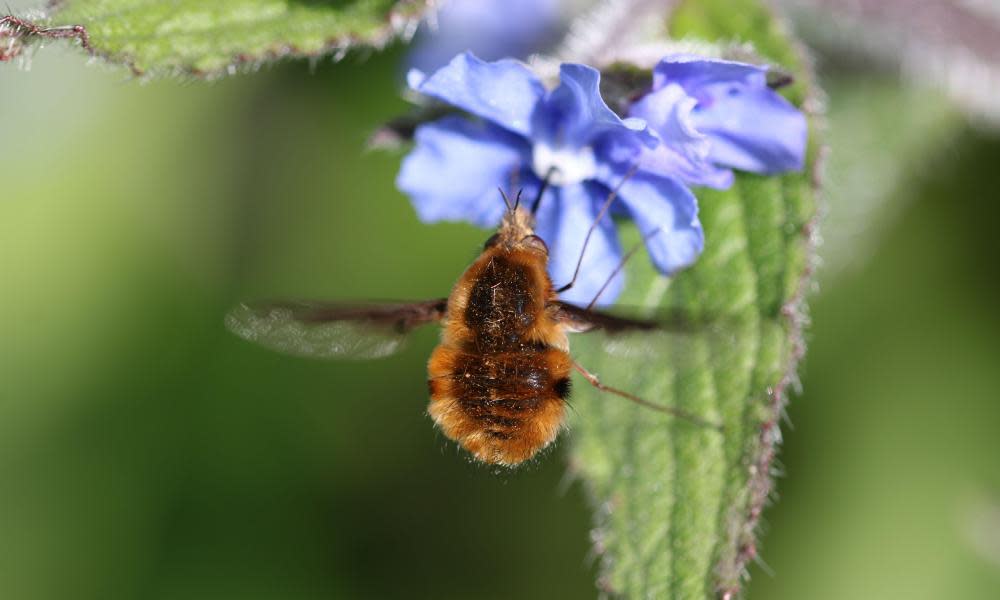A furry imposter hovers above the flowers

I was leaning into the flower border, thinning out a rampant patch of green alkanet, when there was a high-pitched buzz beside my ear. Turning my head, I glimpsed an insect hovering at eye level as it supped nectar from the bright blue flowers.
At first glance it looked like a bumblebee, plump and furry-bodied, but then I noticed its prominent eyes, spear-like proboscis, and long, spindly, dangling legs – it was a bee mimic in the order Diptera. Its wings were a blur, but as it briefly came to rest on a leaf, they stilled, and I could see distinctive chocolate-coloured bands along the leading edges. This identified it as a dark-edged bee-fly (Bombylius major), the most common species in the UK.
Another bee-fly arrived and the first flew up to intercept it. They behaved like tiny drones, taking off vertically, hovering, then zipping left and right. They also displayed a unique behaviour known as “yawing”, rotating quickly around a vertical axis while in midair. The trigger for this is unclear, but scientists believe that it may be some form of mating ritual.
Following their erratic flightpaths left me feeling giddy, but I managed to keep track of one individual as it made its way across the garden. Suddenly, it dropped down and began scouting the bare ground in front of my raised vegetable bed.
A cluster of conical spoil heaps marked the nest cavities dug by tawny mining bees (Andrea fulva) and it’s here that the bee-fly focused her attention. Dipping down, she collected dust in her “sand chamber”, a structure on her posterior. Hovering above one of the mounds, she began flexing and thrusting her abdomen, flicking the minute eggs towards the 4mm entrance hole. The coating of dust weighed them down, making it impossible for me to see where they landed.
Once the eggs hatch, the parasitic bee-fly larvae wriggle into the burrow in search of brood cells, waiting patiently for the solitary bee grubs to emerge and fatten on stored pollen. Attaching themselves to their well-nourished hosts, they suck out their body fluids, slowly eating them alive.
• Country Diary is on Twitter at @gdncountrydiary

 Yahoo Movies
Yahoo Movies 
